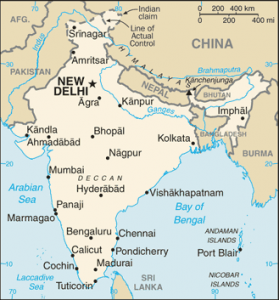A 14-year-old boy from Warapudi village in Indapur taluka in Pune district became the latest victim of the deadly viral disease in the Pune District of India, bringing the death toll in this one area of India to 21 year to date.

Image/CDC
The teen developed symptoms of rabies including hydrophobia, aerophobia and breathlessness and was rushed to the Pune Municipal Corporation-run Naidu Infectious Diseases Hospital,but unfortunately he succumbed to the nearly 100% fatal virus.
“Despite sustaining a serious dog-bite wound some days ago, the boy had not taken the anti-rabies vaccination or fast-acting rabies immunoglobulins (RIG),” said S T Pardeshi, medical officer of health (MoH), Pune Municipal Corporation (PMC).
The situation in Pune is just a small example of a problem that plagues India.
Rabies is a huge problem in India as is the problem with stray dogs, in fact, India’s cities and towns are home to about 30 million stray dogs.
The Animal Welfare Board of India (AWBI), a statutory body under the Environment and Forests Ministry, is struggling to rope in NGOs and animal welfare groups to implement the recently-approved National Rabies Control Pilot Project. However, a lack of funding and outdated policies has made the project without much effect.
“This is a huge challenge – controlling this large population with such a small budget. Moreover, rabies control is not only about sterilizing and vaccinating dogs because not all dogs cause rabies. It takes a lot of effort to control the disease,” said Dr R.M. Kharb, chairperson of AWBI.
An estimated 45% of all deaths from rabies occur in Southeastern Asia with reports about 18,000 to 20,000 cases of rabies a year and about 36% of the world’s deaths from the disease in India alone.
Rabies incidence in India has been constant for a decade, without any obvious declining trend, and reported incidence is probably an underestimation of true incidence because in India rabies is still not a notifiable disease, according to a WHO editorial published earlier this year.

Image/CIA
The situation is rooted in a general lack of awareness of preventive measures, which translates into insufficient dog vaccination, an uncontrolled canine population, poor knowledge of proper post-exposure prophylaxis on the part of many medical professionals, and an irregular supply of anti-rabies vaccine and immunoglobulin, particularly in primary-health-care facilities.
According to one study, only 70% of the people in India have ever heard of rabies, only 30% know to wash the wounds after animal bites and, of those who get bitten, only 60% receive a modern cell-culture-derived vaccine. Ironically, in this era of mass communications and advanced health systems, even physicians sometimes know little about proper prophylactic measures following animal bites.
Given the conditions that prevail in India, several measures must be taken to control rabies effectively including public education campaigns, ensure the uninterrupted availability of vaccines and anti-rabies immunoglobulin in all hospitals and in remote primary-health-care centres, training of primary care providers, more exposure to animal bite management in medical schools and dog vaccination through baits and sterilizing stray dogs.


VETS BEYOND BORDER (Australia) were to take up Rabies Control in Pune?